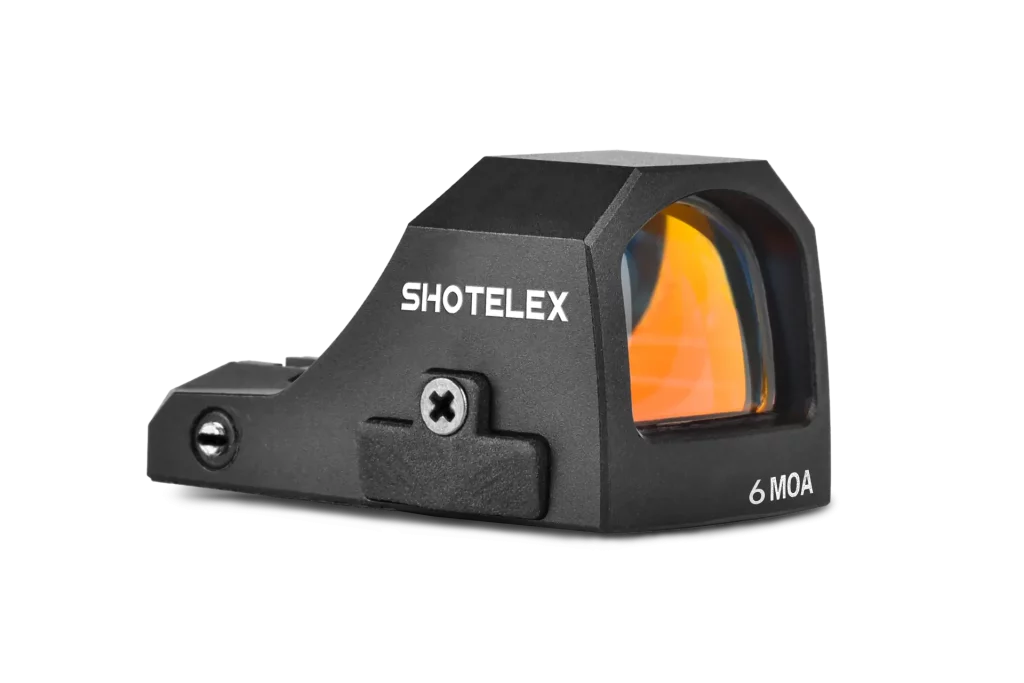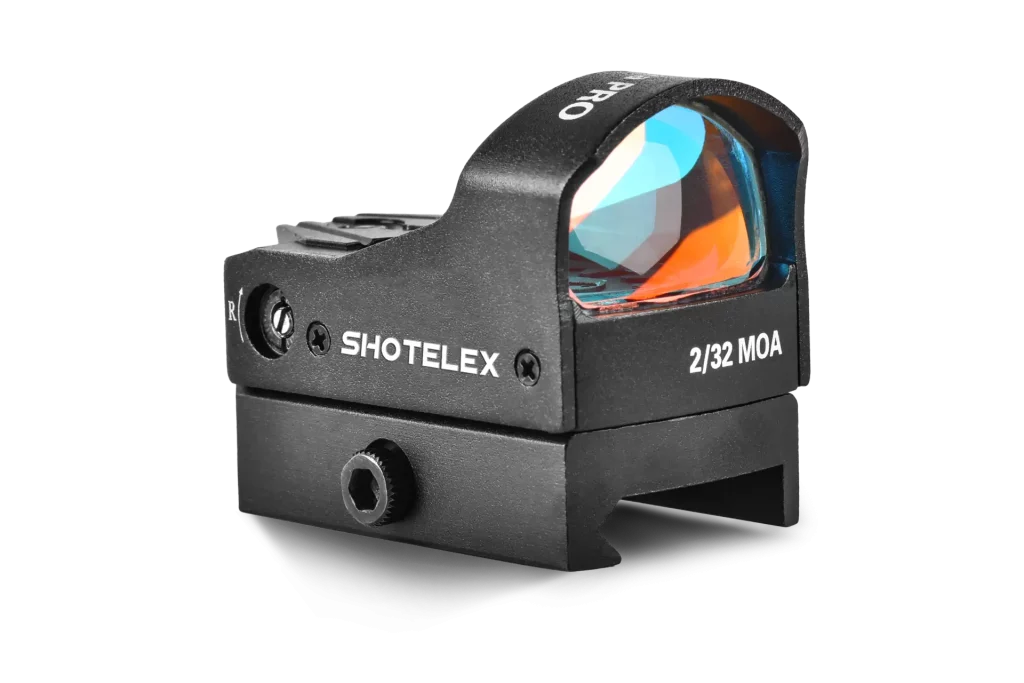Differences Between Red Dot Sights and Reflex Sights
When it comes to aiming devices for firearms, airsoft, or other targeting systems, red dot sights and reflex sights are some of the most popular choices for shooters. These systems are known for their simplicity, speed, and accuracy, making them invaluable tools for military personnel, law enforcement, hunters, and hobbyists. However, the terms “red dot sight” and “reflex sight” are often used interchangeably, which can lead to confusion among buyers. This article delves into the similarities and differences between the two and explores the role of Chinese reflex sight manufacturers, such as Shotelex, in the market.
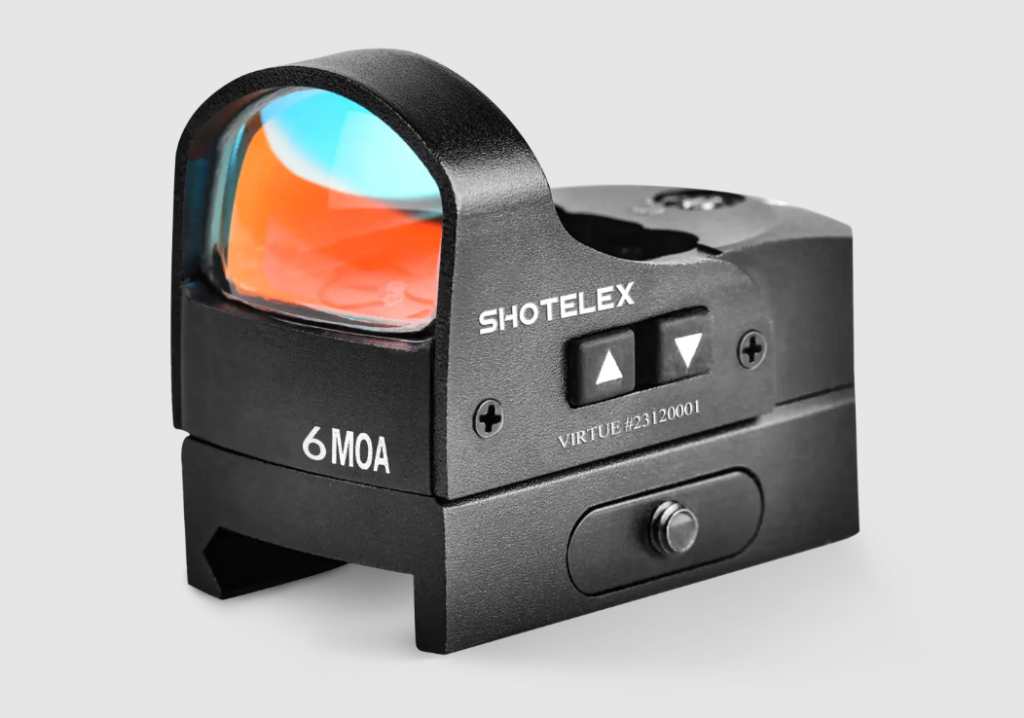
What Are Red Dot Sights?
A red dot sight is a generic term for any non-magnifying optic that uses a red (or occasionally green) dot as the reticle to assist with aiming. These sights are popular for their simplicity, ease of use, and ability to provide fast target acquisition. Red dot sights are especially valuable in situations where speed and precision are critical, such as competitive shooting, hunting, or tactical applications.
Key Features of Red Dot Sights
- Non-Magnifying: Most red dot sights provide a 1x magnification, allowing users to maintain situational awareness and target acquisition speed.
- Illuminated Reticle: The reticle, often a red dot, is illuminated and projected into the shooter’s line of sight.
- Versatility: Red dot sights are compatible with a wide range of platforms, including rifles, shotguns, handguns, and airsoft guns.
- Ease of Use: Red dot sights are particularly favored for their simplicity and speed, making them ideal for beginners and experienced shooters alike.
Types of Red Dot Sights
Red dot sights encompass various technologies, including:
- Reflex Sights: These use reflected LED light to create the reticle. Reflex sights are one of the most common forms of red dot sights.
- Holographic Sights: These use a laser to project the reticle onto a holographic film inside the optic. Known for their precision, holographic sights are typically more expensive than reflex sights.
- Prism Sights: Compact scopes with a fixed magnification and an illuminated reticle. While they can have a red dot, they are not as fast for target acquisition as reflex or holographic sights.
Benefits of Red Dot Sights
- Ease of Use: Red dot sights are simple to operate, making them ideal for beginners and experienced shooters alike.
- Speed: They allow for quick target acquisition since the shooter only needs to align the dot with the target.
- Parallax-Free Design: Most red dot sights are parallax-free, meaning the dot stays on target regardless of eye position.
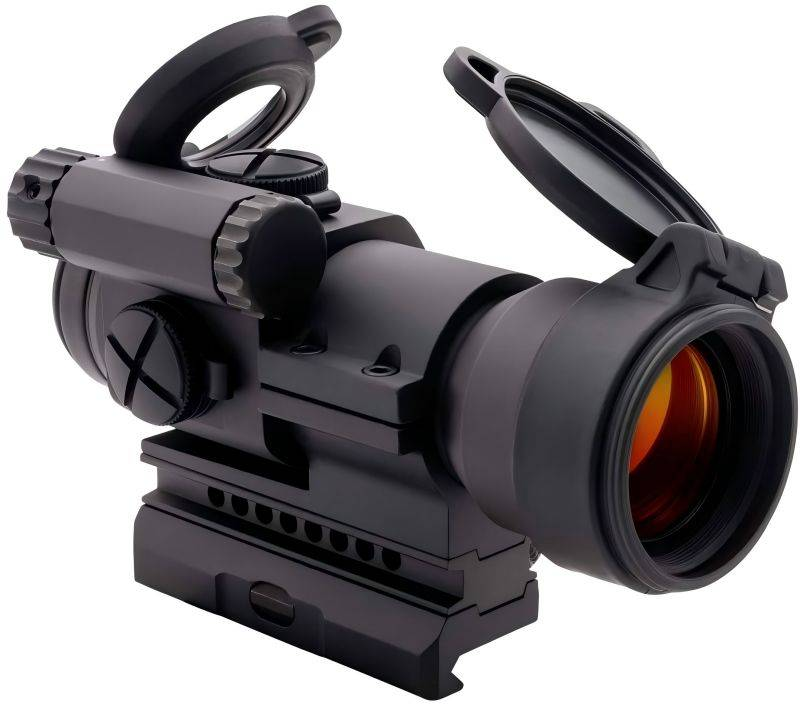
What Are Reflex Sights?
A reflex sight is a specific type of red dot sight that uses an LED light source and a reflective lens to project the reticle. Reflex sights are popular for their lightweight design and versatility, and they come in two main styles: open reflex sights and closed reflex sights.
How Reflex Sights Work
Reflex sights use a reflective lens to project the dot reticle. The dot appears superimposed over the target when the shooter looks through the lens. The light source is typically an LED that is reflected off a partially mirrored lens toward the user’s eye.
Open vs. Closed Reflex Sights
- Open Reflex Sights: These have an exposed design where the lens and light source are not encased. They are lightweight and compact, making them ideal for pistols and lightweight carbines.
- Closed Reflex Sights: Enclosed in a tube-like housing, these sights offer better protection from environmental elements like rain, dust, or debris. They are more rugged and durable than open reflex sights.
Advantages of Reflex Sights
- Unlimited Eye Relief: Shooters can position their eyes at any distance from the optic without losing clarity or alignment.
- Lightweight: Reflex sights are often lighter than other red dot sight types, especially in the open design.
- Quick Target Acquisition: Their simple design allows for fast aiming, making them ideal for close-quarters situations.
Key Differences Between Red Dot and Reflex Sights
While all reflex sights are red dot sights, not all red dot sights are reflex sights. Here’s a breakdown of their differences:
1. Scope
- Red Dot Sights: A broad category that includes reflex, holographic, and prism sights.
- Reflex Sights: A specific subset of red dot sights that use reflected LED technology.
2. Technology
- Red Dot Sights: May use various technologies, including reflection (reflex), laser projection (holographic), or etched glass (prism).
- Reflex Sights: Exclusively use reflected LED light to create the reticle.
3. Design
- Reflex sights are often open and lightweight, making them ideal for handguns and compact firearms. Tube-style reflex sights, however, resemble traditional scopes and are more durable in harsh conditions.
- Other red dot sights, such as holographic sights, tend to have bulkier designs and rely on more complex technologies.
4. Reticle Options
- Reflex sights typically feature a simple red or green dot.
- Holographic and prism sights often offer more advanced reticle options, including crosshairs or range-finding reticles.

Chinese Reflex Sight Manufacturers: Innovating the Optics Market
In recent years, Chinese reflex sight manufacturers have emerged as significant players in the optics industry, offering high-quality reflex sights at competitive prices. Among these manufacturers, Shotelex stands out as a brand gaining recognition for its innovation, reliability, and affordability.
Shotelex and Its Offerings
Shotelex is a Chinese optics manufacturer that produces a range of reflex sights catering to both civilian and professional markets. Known for their commitment to quality and affordability, Shotelex sights often feature:
- Durable Construction: Robust materials that can withstand harsh environments.
- Advanced Reticle Options: Bright and clear dots or multi-reticle systems for different shooting applications.
- Affordability: Competitive pricing that makes high-quality optics accessible to more users.
Other Prominent Chinese Brands
In addition to Shotelex, other Chinese red dot suppliers like Holosun, Vector Optics, and Feyachi have also made significant inroads into the optics market. These companies focus on balancing affordability with performance, challenging traditional Western brands in the mid-tier and budget categories.
Why Choose Chinese Reflex Sights?
- Value for Money: Chinese manufacturers often offer features comparable to high-end Western brands at a fraction of the cost.
- Innovation: Many Chinese red dot manufacturers, including Shotelex, incorporate features like solar power, motion-activated reticles, and multi-reticle options.
- Expanding Quality Control: As competition increases, Chinese optics manufacturers are continually improving quality control to meet international standards.
Factors to Consider When Choosing
When selecting a red dot or reflex sight, several factors should be considered:
1. Intended Use:
- Hunting: A durable, reliable sight with a clear reticle is essential for hunting.
- Target Shooting: A sight with a precise reticle and a wide field of view is ideal for target shooting.
- Tactical Applications: A rugged, fast-acquiring sight is crucial for tactical situations.
2. Personal Preference:
- Eye Relief: Consider the distance between your eye and the sight’s lens. A longer eye relief can be more comfortable for some shooters.
- Reticle Style: Different reticle styles can be better suited to specific shooting applications. A simple dot reticle is ideal for fast target acquisition, while a circle-dot reticle can improve precision.
- Weight and Size: The weight and size of the sight can impact its overall balance and handling.
3. Budget:
Red dot and reflex sights are available in a wide range of price points. Consider your budget and the features that are most important to you.
4. Environmental Conditions
The environment in which you use your firearm can impact the performance of your sight. Reflex sights can be more susceptible to environmental factors such as dust, dirt, and moisture. Tube-style red dot sights, on the other hand, are better protected from these elements.
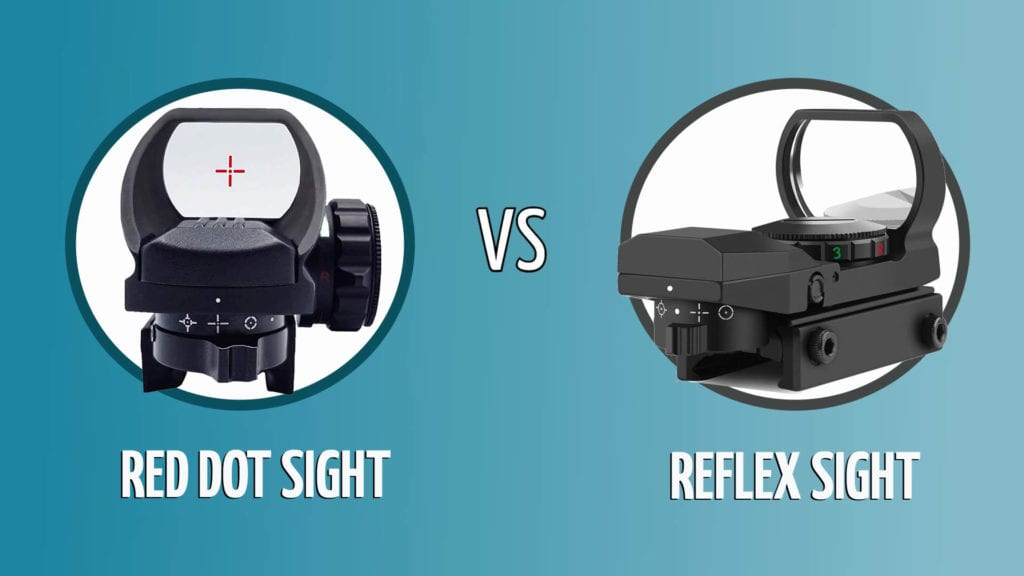
In short, understanding the differences between red dot sights and reflex sights is essential for choosing the right optic for your needs. While reflex sights are a subset of red dot sights, their unique design and functionality make them a standout choice for many shooters. Additionally, the rise of Chinese manufacturers such as Shotelex has made high-quality optics more accessible than ever.
Whether you’re a seasoned marksman or a novice shooter, there’s a red dot or reflex sight out there to enhance your performance. By considering your platform, application, and budget, you can find an optic that meets your needs and helps you hit your target with confidence.


